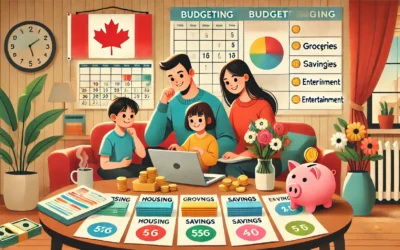Budgeting is a crucial part of any business. In accounting, budgeting is an essential tool for forecasting and controlling the financial future of a business. A good budget is a road map that guides the company’s operations and helps to ensure the best possible financial performance. This comprehensive guide will provide an understanding of budgeting basics, including the types of budgets, budgeting processes, and the importance of budgeting in accounting. It will also provide details on how to create and manage a successful budget in order to maximize profits, reduce costs, and better plan for the future. With the help of this guide, you will be well-equipped to create an effective budget and gain control of your finances.
What is budgeting in accounting?
A budget is a financial plan that forecasts the expected income and expenses for a specific period of time. A budget is a snapshot of a business’s financial situation at a specific point in time and can be used to compare the forecasted numbers to the actual numbers. Budgets can be created at the department level or the organizational level. Department budgets forecast the expected expenses and revenues while organizational budgets forecast the expected revenues and expenses of the entire organization. Budgets are a crucial part of any business and are used for a number of purposes.
Budgets can be used for planning, managing financial resources, tracking expenses, and making financial forecasts. A budget is important for tracking the business’s finances and determining whether it is making a profit. Budgets can also be used to forecast cash flow to determine if there are any upcoming cash shortages. And budgets can help track the company’s spending to ensure that it is within budget.
Types of Budgets
- Capital expenditure budget – This budget forecasts the costs associated with purchasing new assets.
- Cash flow budget – This budget forecasts the expected cash inflows and outflows for a given period of time.
- Capital budget – This budget forecasts the expected costs of constructing new facilities or purchasing new equipment.
- Debt repayment budget – This budget forecasts the expected repayments of outstanding debt.
- External financing budget – This budget forecasts the expected costs of raising capital through outside investors.
- Forecasted sales budget – This budget forecasts the expected sales of a product or service.
- Internal financing budget – This budget forecasts the expected profits of a business in order to determine if it can finance its operations internally or if it needs to raise external capital.
Budgeting process
The budgeting process has six key steps. These steps will vary depending on the type of budget being created.
Define the budgeting process – The budgeting process begins with the identification of the key objectives and the business problem that needs to be solved. This is followed by the development of the budgeting process.
Identify relevant data – Once the budgeting process has been identified, the next step is to collect the data needed to create the budget.
Create the budget – Once the data has been collected, the next step is to develop the budget. The budget needs to be built based on the data collected.
Analyze the budget – This step in the budgeting process is to analyze the budget created. This step is crucial because it is during this time that the budget is reviewed to ensure accuracy and make any necessary adjustments.
Improve the budgeting process – The final step in the budgeting process is to use the budget as a learning experience to improve the budgeting process for the next time.
Creating a budget
Creating a budget is the first step in the budgeting process. Budgeting can be done at either the departmental level or the organizational level. Based on the level of detail required, budgets vary in complexity. There are four key stages in the process of creating a budget. These stages vary depending on the level of detail required.
Establish budget categories – The first step in creating a budget is to identify the budget categories. The budget categories will depend on the business and the specific objectives of the budget.
Establish budget numbers – Next, the budget numbers are established. The budget numbers will vary depending on the level of detail required. The budget numbers will depend on the budget categories and the data collected.
Create a budget format – The next step in the process is to create a budget format. The budget format should be designed in such a way that it provides the necessary level of detail without being too lengthy or complicated.
Create the budget – Finally, the budget is created based on the budget format designed.
Budgeting strategies
There are a number of different strategies that can be used when creating a budget. The best strategy will depend on the specific business and the type of budget being created.
Cash flow forecasting – This strategy forecasts the expected cash inflows and outflows for a given period of time. This strategy can be used when creating a cash flow budget.
Top-down budgeting – This strategy starts with a detailed forecast at the top and works its way down to the bottom level. This strategy can be used when creating an organizational budget.
Parametric budgeting – This strategy uses predetermined formulas and equations to create the budget. This strategy can be used when creating a capital budget.
Bottom-up budgeting – This strategy starts with a detailed forecast at the bottom and works its way up to the top level. This strategy can be used when creating a forecasted sales budget.
Budgeting software and tools
There are a number of different budgeting software and budgeting tools available. The type of budgeting software or budgeting tool that is best for your business will depend on the business’s specific requirements. The budgeting software and tools that are available include:
- Workday
- Oracle
- SAP
- Microsoft Dynamics 365
This list is just to provide an example of software available in the market.
Budgeting best practices
There are a number of best practices that companies can use to ensure that they create and manage successful budgets.
Start with the end in mind – Companies should start with the end in mind when creating budgets. The end goal should be clear to ensure that the budget is focused on the right areas.
Plan backwards – When creating a budget, companies should plan backwards. This means that they should start with the expected outcomes of the budget and work their way backwards to the beginning of the process. –
Stay flexible – Although budgets are very important, it is important to remain flexible. Budgets should be designed in a way that allows for changes if necessary.
Understand the business – Companies should understand their business in order to forecast the expected revenues and expenses. This will make it easier to create a budget that reflects the actual business.
Use key performance indicators – When creating budgets, companies should use key performance indicators in order to focus on the most important areas. This will help to ensure that the budget is designed for success.
Use comparisons – Companies should use comparisons when creating budgets. This means that they should use data from previous years to help forecast the expected revenues and expenses.
Conclusion
Budgeting is a crucial part of any business. In accounting, budgeting is an essential tool for predicting and controlling the financial future of a business. A good budget is a road map that guides the company’s operations and helps to ensure the best possible financial performance.



